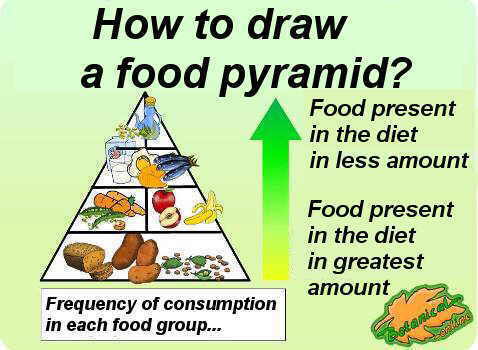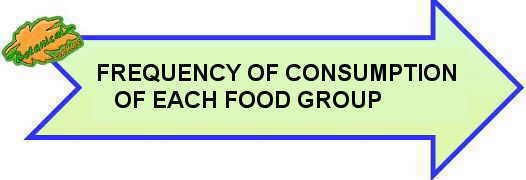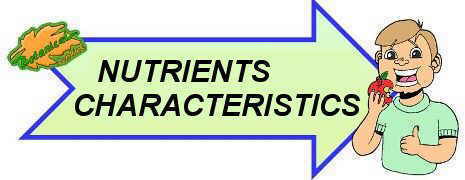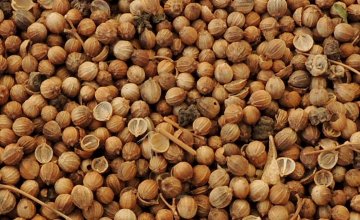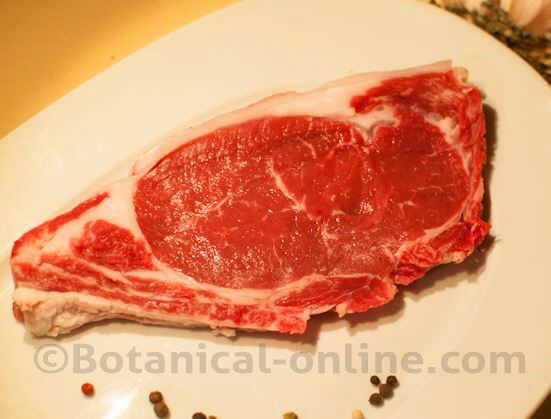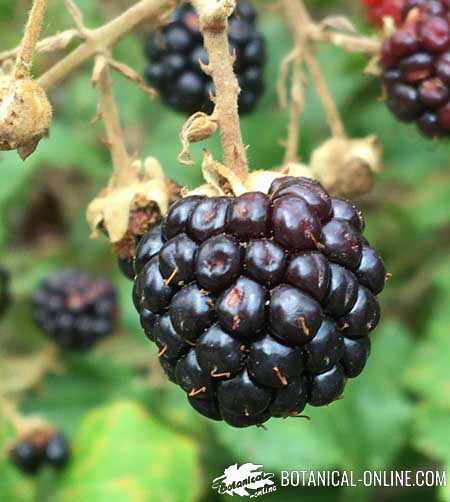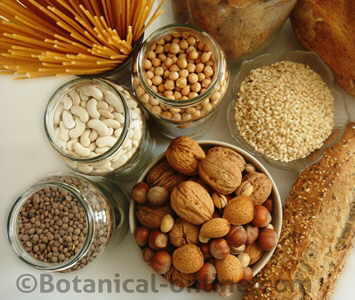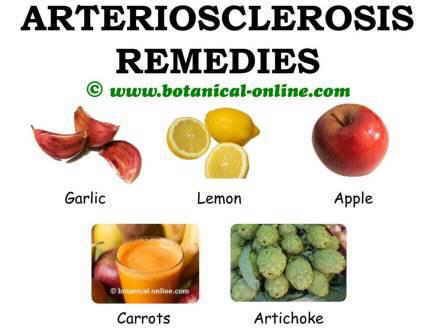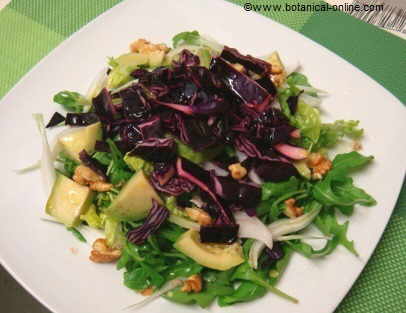Contents
- 1 How to draw and interpret the food pyramid
- 1.1 What is the food pyramid?
- 1.2 What is the official food pyramid like?
- 1.3 Food groups of the pyramid
- 1.4 How to draw a food pyramid?
- 1.5 What foods to place at the base of the pyramid?
- 1.6 Water at the base of the food pyramid
- 1.7 What foods to place in the second step of the pyramid?
- 1.8 What foods to place in the third step of the pyramid?
- 1.9 What foods to place in the fourth step of the pyramid?
- 1.10 Example of food pyramid drawn
- 1.11 What foods to draw at the apex or tip of the pyramid?
- 1.12 Healthy life style
- 1.13 How to calculate the food frequency of the pyramid?
- 1.14 What foods should not be included in the pyramid?
How to draw and interpret the food pyramid
What is the food pyramid?
The food pyramid, also called nutritional or dietary pyramid, is a visual scheme that aims to illustrate in a simple and beautiful way how healthy eating should be.
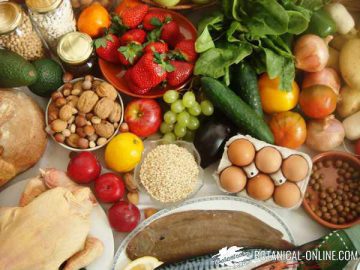
Suitable foods for a healthy diet
What is the official food pyramid like?
There are many different pyramids and all of them may be correct. Although there are some variations between them, they all must be very similar because they contain foods that are nutritious.
Food groups of the pyramid
Food pyramids should include the following major food groups:
- Foods rich in carbohydrates
- Foods rich in fiber
- Foods rich in vitamins and minerals
- Foods rich in proteins
- Foods with healthy fats
- Water
How to draw a food pyramid?
To draw a food pyramid you must follow the following steps:
- It must have a pyramid shape, at least, approximately. The base must be wider than the top end.
- You must put the main food groups. Each group of foods must be differentiated by colors or sections.
- Food groups should be ordered from highest to lowest consumption. At the base of the pyramid are the foods that are consumed in greater quantity, the “base of food”.

Visual scheme on how to draw a food pyramid and examples of foods that may appear
- Each group of foods is represented by the main foods that make it up. For example, foods rich in carbohydrates are represented with wholemeal bread, rice, oats, lentils and tubers.
- You can draw prepared recipes (lentil stews, salads) and uncooked natural foods (lentils, lettuce).
- The frequency of recommended consumption of each food group should appear, that is, how much to eat daily or weekly of each food. It can be put in the same box, or in a note below the pyramid.
- You can include healthy lifestyle guidelines, such as exercising or drinking water, as they are also very important for good nutrition.
What foods to place at the base of the pyramid?
The foods of the base of the pyramid for children should be those rich in carbohydrates, because they are the energy nutrients par excellence. Children need energy to grow healthy while they play, dance, study, read, draw, …
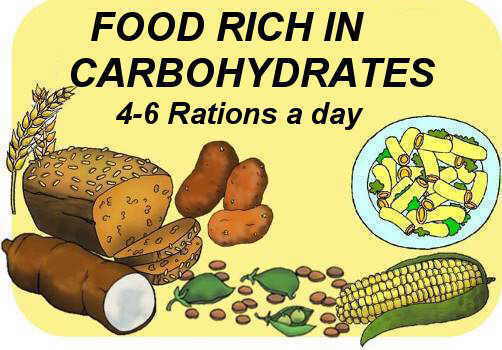
The basis of the diet are energy foods, which are those rich in carbohydrates. See more: Examples of foods rich in carbohydrates
It is better that these foods have fiber (such as legumes or whole grain bread) because energy is absorbed slower and is more durable.
In adults, as they no longer have to grow, they do not need as much energy. Then, the base of the pyramid could be the vegetables, or the combination of the two groups.
Water at the base of the food pyramid
It can also be in the base since it is essential for life. We can drink between 4 and 8 glasses a day, approximately. Outside the home, it is best to always carry a refillable bottle instead of spending plastic containers daily.
- Foods at the base of the pyramid are those that provide carbohydrates, such as cereals and derivatives (bread and pasta), tubers, roots and also pulses.
What foods to place in the second step of the pyramid?
- In the second step of the pyramid should appear fruits and vegetables, which have to be present in almost every meal of the day.
- This group of foods provides fiber, vitamins and minerals.
- Vegetables are also beneficial for the bacteria in our intestines.

Fruits and vegetables are very rich in fiber, vitamins and minerals. They are very healthy and for this reason you have to consume at least 5 servings a day between the two groups
- It is better to consume whole fruits than in juices, because this way they have the benefits of the components of the pulp (bioflavonoids).
- Industrial soft drinks and nectars DO NOT count as a fruit serving. These products have a lot of sugar and little fiber, vitamins and minerals, although in their advertising they say they are “natural”.
What happens because I do not eat vegetables?
What foods to place in the third step of the pyramid?
In the third step of the pyramid we can place the foods that provide many proteins because they are consumed in less quantity than those previously mentioned: egg, white meat, seafood and fish.
Dairy can be placed in the third step, because these foods have many proteins.
Vegetarian people do not eat meat and therefore in this section should include foods with vegetable proteins, which are mainly legumes and soy derivatives, such as tofu. Even if you do not eat a vegetarian diet, it is possible to substitute legumes for animal protein. For example, lentils can substitute a serving of meat.
Red meat should not be placed on this step, because it is very polluting to the environment and may be harmful to health. Red meat should be consumed occasionally.

There are many foods rich in proteins. Vegetarians do not consume meat and have to eat more legumes.
What foods to place in the fourth step of the pyramid?
Healthy oils and fats are usually placed at the highest step of the pyramid because these foods are very energetic and therefore are consumed in smaller quantities (in a small amount they provide a lot of energy and nutrients).
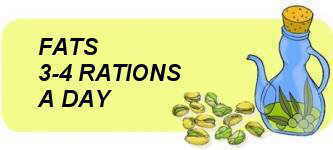
Oils and fats provide many important nutrients. They are so energetic that they are consumed in small quantities.
The fact of being in the upper part of the food pyramid does not mean that they should not eat! It only makes reference to that they are consumed in smaller quantities. For example, nobody eats “a plate” of nuts, but only a handful. Nor do you eat “a glass” of oil, but a little trickle. Eating foods with good fats every day is healthy and recommended.
Example of food pyramid drawn
We will have a pyramid similar to this, although the drawings of each food group will vary depending on the style of drawing of each one, the typical foods of each country and the season of the year:
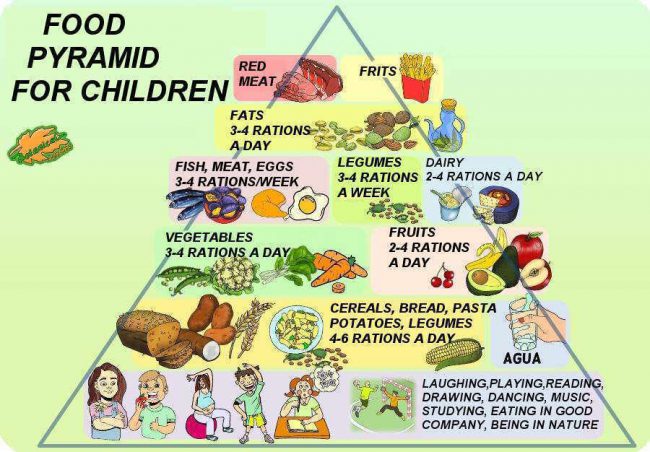
Pyramid of food for children
What foods to draw at the apex or tip of the pyramid?
The foods of the apex of the nutritional pyramid are those that it is better not to consume, or at least not in a habitual way (for example, once a month). In this last step we place red meat.
It is better not to abuse from red meat. The nutrients that we provide can be obtained from many other foods that are more sustainable for the environment.
The nutrients that red meat brings are also found in many other foods. However, the consumption of large animals (beef, pork, etc.), involves using many natural resources and implies that it is necessary to destroy natural areas to grow transgenic soybeans. To stop the environmental disaster, it is necessary for people to stop consuming so much red meat, hamburgers, steaks, ribs, steaks, and this type of meat whose production is very unsustainable. Or is it that nutrition is governed only by nutritional criteria, without taking into account the impact of our diet on the environment?
You can also include foods that you do not want to eat too often, such as fried foods, snacks and sausages, classified as occasional food. These products contain many heated fats, which are not the most advisable for health. However, they can be consumed sporadically, for example 1 time a month, but not every week.
Healthy life style
Some pyramids include a section on healthy lifestyle. There are aspects that surround food that are also beneficial for health, such as being in nature, eating in good company, laughing, walking, drawing, dancing, listening to music, … A pleasant life also “nourishes” us. See for example the lifestyle of the Mediterranean diet. Another example is the following:

At the base of our pyramid we can include our healthy lifestyle.
How to calculate the food frequency of the pyramid?
Once we have the defined food groups and the examples that we will draw, we have to see the recommended frequency in each food group.
Next to each step of the pyramid appears a recommendation on the number of times that each group of foods has to be consumed. For example, you have to eat vegetables every day, but very little red meat per month. Do you want to know how these amounts are decided? And how many grams are a serving of vegetables?
Frequency of consumption of each food group
What foods should not be included in the pyramid?
As it is a pyramid of healthy eating, with foods that are eaten every day, you should avoid including edible products that are not healthy or beneficial for health. These are the so-called occasional consumption products.
They are not recommended because they are made with unhealthy ingredients such as refined sugar (whose consumption causes cavities), trans fats (which raise cholesterol), too much salt (which causes hypertension), etc. These products are called junk food.
An easy way to distinguish what we should not eat is to see the label of the products: if they contain more than 3 or 4 ingredients, surely they are not recommended.
Characteristics of nutrients
Child feeding course index
![]() More information on nutrition.
More information on nutrition.

